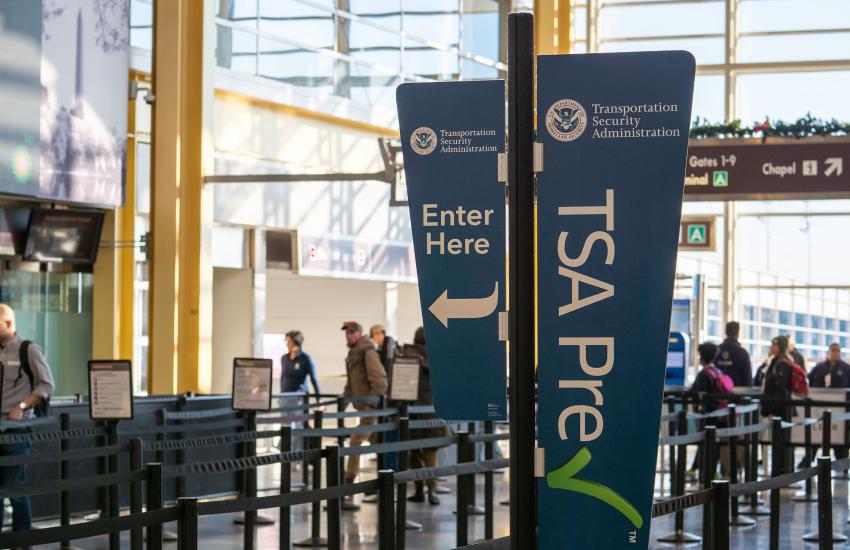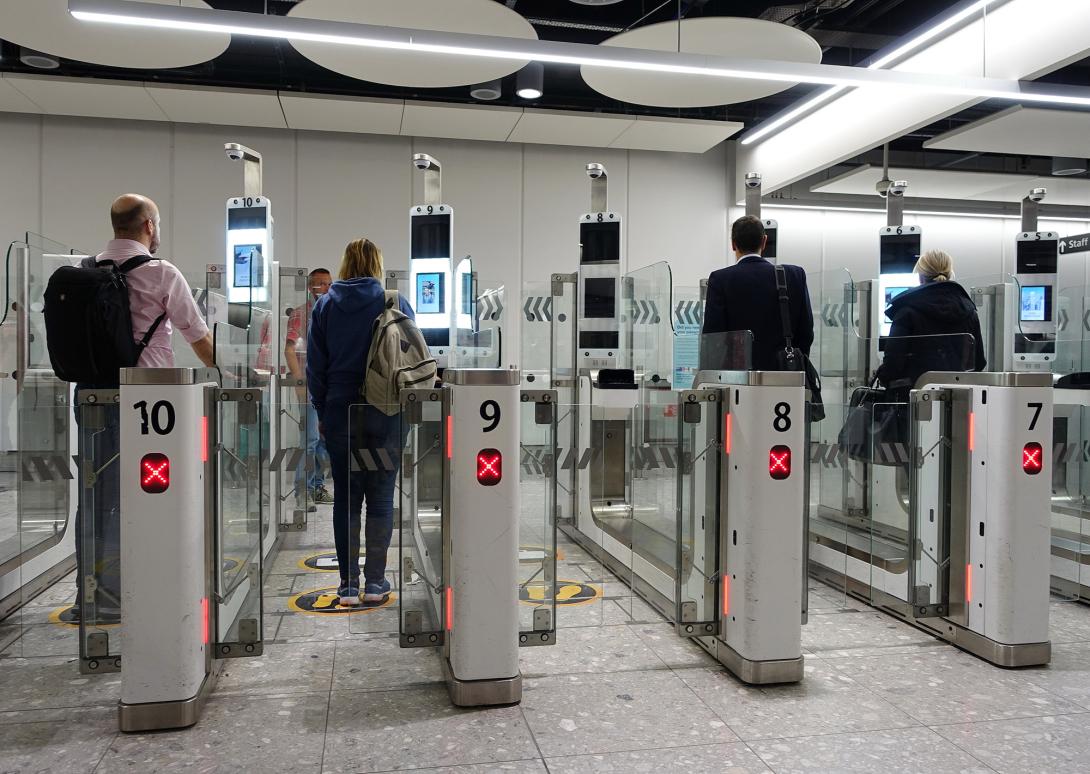Digitized Travel: Debunking Misinformation in Facial Recognition Technologies
Similar to the 1970s controversies surrounding DNA technology, today’s facial recognition capabilities are often bound by misconception. Still, modern-day technology’s accuracy continues to advance as it shapes the future of everyday security.
“There’s a lot of misunderstanding of what it does and doesn’t do,” Melissa Conley told SIGNAL Media in an interview. Conley is the executive director for capability management and innovation at the Transportation Security Agency (TSA).
Having served at the TSA for more than 20 years, Conley identified misinformation as the biggest challenge in deploying facial recognition technology (FRT).
Travel volumes are constantly increasing, with June seeing a record-breaking 2.99 million passengers in one day. Therefore, efficiency is more important than ever.
“If you look back five-10 years ago, we were doing ID verification manually with lights and loops,” Conley shared. “Bringing on the credential authentication technology, it automates the document authentication of a driver’s license or passport.
Credential authentication technology helps officers verify information while also giving agents real-time access to the TSA’s secure flight data, which provides risk status data for all incoming passengers.
With FRT specifically, privacy has been in mind since day one, Conley reported.
“When we were designing and thinking about rolling out FRT, it was important to us to make sure that we were transparent in everything we did in following all the privacy guidelines,” she said.
Of note, FRT remains optional at U.S. airports, meaning all travelers are given the opportunity to opt out of using the technology.
“We do a lot of testing,” Conley continued, emphasizing the crucial interagency collaboration for new technology deployment.
Partners such as the Department of Homeland Security Science & Technology Directorate and the National Institute of Standards and Technology (NIST) help the agency with testing.
For example, Conley offered, NIST had published a list of the best biometric matchers, which helped the TSA in decision-making. NEC Global and IDEMIA were the two companies mentioned.
“We make sure we’ve got good camera capture to get a good quality to match [the ID],” she said. “And we make sure that there’s no bias in our entire setup.”


It is also crucial to understand the data management policies behind the objectively new technology.
“We’re not collecting any of this data,” Conley stressed. “We’re not keeping any of this data. Everything is deleted after that picture is taken.”
Additionally, the cameras are not used for surveillance.
“Humans are not good at matching faces,” Conley continued. The fatigue and complexity of the environment is not good practice, she stressed, further emphasizing the importance of automated technologies.
Privacy concerns remain, however, justifying a need for organizations like the International Biometrics & Identity Association (IBIA), which works closely with all DHS agencies.
“Our organization looks at the ethical use of these modalities,” IBIA’s managing director, Robert Tappan, told SIGNAL Media in an interview. With more than 25 industry members, IBIA strives to advance the adoption and responsible use of technologies relating to identity management.
Regarding facial recognition, the organization looks at guardrails surrounding the technology to pinpoint its responsible use in accordance with people’s rights to privacy. The technology does not exist to surveil but to verify and authenticate, Tappan echoed Conley’s statements.
“The companies that belong to our organization have all signed on and agreed to a path that these technologies are going to be used for a worthwhile purpose, and it’s usually in access management, verification and authentication type business,” he said.
Misinformation is an incessant threat to modernization, however.
“There are some on Capitol Hill who want to demagogue this issue,” Tappan continued. “They want to say that facial recognition technology is the camel’s nose under the tent that’s going to lead to nonstop surveillance, and that is just not the case."
“We’ve done 57 congressional briefings,” Conley mentioned. “We meet with all the privacy advocacy groups on the regular to make sure that they’re comfortable with what we’re doing.”
Still, technology and digitization continue to advance as they provide an added layer of protection for travelers.
Digital identification is a growing initiative, for instance, with nine states now allowing mobile drivers licenses in the United States.
TSA has partnered with Apple, Google and Samsung to make identification paperless, while remaining compliant with the International Organization for Standardization, Conley shared.
And for TSA pre-check travelers, touchless solutions are an added benefit.
Through partnerships with Delta and United, passengers are given an opportunity to opt into a biometric journey at participating airports, Conley told SIGNAL Media.
Consenting to using the technology triggers a unique identifier, she went on. Having a passport on hand is necessary, however. “We’ve got access to the Department of State passport information through the [Customs and Border Protection agency].”
The U.S. Customs and Border Protection stages the biometrics, Conley explained. “Your passport photo gets staged in a gallery and when you show up at a checkpoint or when you’re checking a bag, that identity verification piece, you’re not pulling out any token, you’re not pulling out any documents, you’re just presenting your face and it’s matching to that gallery that’s been pre-staged.”
The verification is so efficient that passengers could opt in while in queue to cut the line.
So, could the world of travel soon become completely digitized? In the case of the United States, the answer is “maybe.”
“There are governments that are doing it today with registered travelers for their own individual use cases,” said IDEMIA CEO Donnie Scott. “In the U.S., I think you would logically start with a trusted population that’s comfortable and travels frequently and wants a more frictionless experience.”
IDEMIA is one of the largest identity and biometric security providers for the TSA and has been the official provider of TSA PreCheck enrollment since 2013.
The most logical transition into digitized travel for U.S. citizens would be through TSA PreCheck, Scott stated.
The program’s enrollment process includes a biometric check and a travel credential capture for identity verification. “Because we capture your face at the time of PreCheck enrollment, [the TSA] can then use that at the checkpoint with your consent,” he explained.
Opting in will remain in place in the United States, however.
“If we ever did make it not optional, we would do a lot of work to educate and notify and ask permission of Congress,” Conley stated.
As with many touchless technologies, the COVID-19 pandemic helped advance digitized identification technologies.
And while interoperability among federal agencies has progressed, a challenge remains.
“We have 50 plus jurisdictions that issue state IDs and driver’s licenses,” he said. “The biggest challenge is how you bring a diverse set of customers together around the technologies that can help them when most of what’s designed in government is meant to be a specific program within a specific agency that does specific things.”
Lack of federal policies around biometrics also acts as a hindrance for technological advancement, he added. “Therefore, you’ve got a patchwork of compliance issues to deal with and a patchwork of misunderstandings for our customers to buy a good outcome based on where they may sit.”





Comments